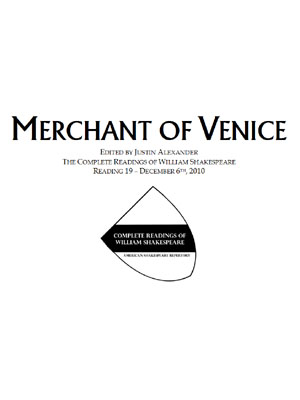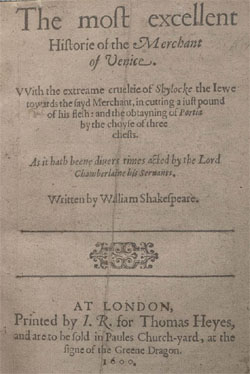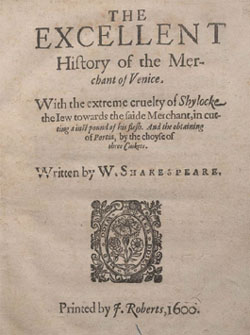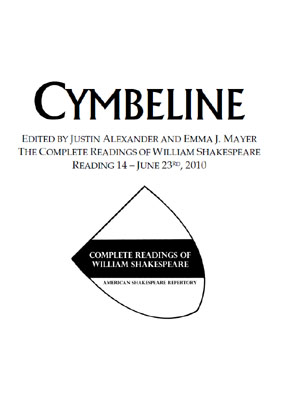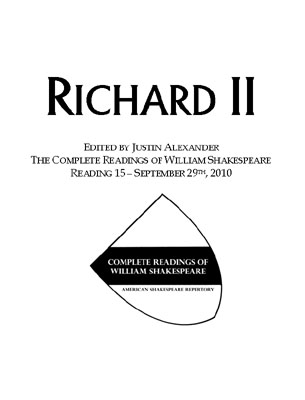 Hamlet is almost universally acknowledged as Shakespeare’s greatest masterpiece. Among his plays it is also, without doubt, the most complicated of texts. (One might even say convoluted.) Some of its mysteries may never be truly unraveled, but I think we can achieve a fair degree of certainty in a great many matters. Doing so, however, is going to require a great deal of untangling. So before we tackle that seemingly overwhelming task, let’s get straight to the scripts:
Hamlet is almost universally acknowledged as Shakespeare’s greatest masterpiece. Among his plays it is also, without doubt, the most complicated of texts. (One might even say convoluted.) Some of its mysteries may never be truly unraveled, but I think we can achieve a fair degree of certainty in a great many matters. Doing so, however, is going to require a great deal of untangling. So before we tackle that seemingly overwhelming task, let’s get straight to the scripts:
HAMLET – FULL SCRIPT
HAMLET – CONFLATED SCRIPT
(If you want to follow along come Monday night, you want to grab the Conflated version. That’s the one we’ll be performing from.)
THE THREE TEXTS
We have three source texts for Hamlet. (More than any other play by Shakespeare.)
The First Quarto (Q1) was published in 1603. In addition to the date, its title page reads, in part: “As it hath been diverse times acted by his Highness’ servants in the City of London : as also in two Universities of Cambridge and Oxford, and elsewhere.” Although this text has been periodically identified as Shakespeare’s “rough draft” such theories seem to have little merit. Instead, this heavily corrupted text shows clear indications of memorial reconstruction: An actor (most likely one hired for the touring company) attempted to reconstruct the play from memory and possibly his sides (a written copy of his lines and his cues).
(The tour referenced on Q1′ s title page also may explain one of the most significant changes to the text: The characters of Polonius and Reynaldo are renamed Corambis and Montano. Robert Polenius was the founder of Oxford University and John Reynalds was the President of Corpus Christi College in Cambridge. The similarity of the names might have been interpreted as a veiled insult at the universities, which could explain why the names would be changed.)
Although its heavy corruption and abbreviation may be largely the result of its memorial reconstruction, Q1 may also record the gross structure of a probable theatrical cut intended for the touring production. (The quarto text of Richard III shows evidence of being derived from a similar script cut and conflated for touring.)
One year later in 1604, the Second Quarto (Q2) was published. Also referred to as the “good quarto”, Q2 shows evidence of having been derived from the author’s foul papers. Whatever manuscript it was derived from, however, appears to have been difficult for the compositors at the publishing house to read. (This can be deduced from its many errors.) Q2’s text also shows evidence of the compositors referring back to the text of Q1 for certain passages, most likely as an independent reference whenever they were having difficulty reading the foul papers. (We can identify the Q1 influence whenever spelling and punctuation of the text suddenly matches Q1’s precisely. A similar practice can be found in the second quarto of Romeo & Juliet, which was similarly published after a first quarto based on memorial reconstruction was released.)
The fact that the good text of Q2 was published so rapidly after the appearance of Q1’s bad text has led many people to conclude that it was specifically published in response to Q1. There’s no supporting evidence for that theory, but it certainly sounds plausible.
Hamlet next appears in the First Folio of 1623. And this is where things get complicated: In virtually all cases, when a good quarto of a Shakespeare play existed, the First Folio text was typeset using the quarto text as its source. This isn’t the case with Hamlet: Punctuation, spelling, and even word choice varies considerably between the Q2 and F1 texts. The F1 text also includes 70 lines lacking from the Q2 text, but simultaneously omits 230 lines which can be found in Q2.
And to make matters even more complicated, there are points where F1’s compositors were clearly referring to the Q2 text in the same way that Q2’s compositors were looking at Q1’s text.
UNIQUE PASSAGES
During the 18th, 19th, and much of the 20th century, the standard editorial practice has been to conflate the Q2 and F1 texts into a single text. Recently, however, Hamlet has gotten swept up in a scholastic movement based around the premise that Shakespeare rewrote/revised his own plays. Under this interpretation, F1 is interpreted as a revision of Q2’s rough draft. (Or, occasionally, the reverse.) Most notably, the third edition of Arden’s Hamlet went so far as to print the Q2 and F1 texts as completely separate plays, editing them largely independently of each other.
The truth, however, I suspect lies somewhere inbetween.
Let’s start by looking at the sizable passages missing in one text or the other.
F1- ONLY: There are, according to the third Arden edition, three passages of 4 lines or more which are present in the First Folio but not in the Second Quarto: 2.2.238-267 (starting with “Let me question more in particular” and ending with “I am most dreadfully attended”); 2.335-399 (starting with “How comes it? Do they grow rusty?” and ending with “…Hercules and his load, too.”); and 5.2.68-5.2.81 (starting with “… to quit him with this arm?” and ending with “Peace, who comes here?”).
The last of these passages is clearly a mistake in the Q2 text: It leaves behind a dangling and unresolved sentence fragment.
But what of the first two? They were topical allusions to the acting companies of children that were popular at the time Shakespeare was writing the play. It has often been assumed that they were cut from the play when they were no longer topical, but this only raises the question of why they can be found in F1 and not Q2 (when F1 is the shorter script which appears to have been cut). Thankfully, there’s a solution. James Bednarz in Shakespeare and the Poet’s War argues convincingly that the references were specifically cut from the Second Quarto for its publication in 1604 because the allusions were too topical. By 1604 the Children of the Chapel had become the Children of Her Majesty’s Chapel under the patronage of Queen Anne. Moreover, Queen Anne was from Denmark. Lines that had been harmless fun 5 years earlier could now be seen as political attacks on England’s new Queen.
If we accept that as a plausible explanation, we can now explain the absence from Q2 of all three major F1 “additions” to the text: Two were cut for political reasons, and one was cut by mistake.
Q2-ONLY: According to G.R. Hibbard’s Oxford edition of the play, there are 18 passages of 3 or more lines found in Q2 which are not found in F1. I’m not going to cite them all here, but what I find interesting is that removing these passages from F1 requires “mid-line cuts”. While it seems unlikely that someone making additions to a play would split a single line and splice in a dozen new lines of verse, people cutting verse plays will often mend an incomplete verse line created by their cut by matching it up with another half-cut line later in the text.
Thus it seems very likely that the Q2 passages were removed from the F1 text, not added to the Q2 text.
CONCLUSION: So we can hypothesize that the F1-only passages were, in fact, present in the original Q2 text. And we can further hypothesize that the Q2-only passages were cut from the F1 text and not added to the Q2 text. From this a clear conclusion emerges: The F1 source text was created by cutting lines from the Q2 source text.
WHITHER THE Q1 TEXT?
How does the Q1 text fit in here?
Let’s again turn our attention to the large passages unique to either the F1 or Q2 text. Of the three F1-only passages, two of them can be found in the Q1 text. (The third is missing from a scene which is badly mangled and heavily abbreviated above and beyond the absence of this passage).
Even more notable, however, is that none of the eighteen Q2-only passages can be found in the Q1 text. In fact, many of the cuts are precisely mirrored. For example, after 1.1.107:
F1: “The source of this our watch, and the chief head / Of this post-haste and rummage in the land. [gap] But soft, behold, lo where it comes again.”
Q1: “Is the chief head and ground of this watch. [gap] But lo, behold, see where it comes again.”
And after 1.4.16:
F1: “… it is a custom / More honored in the breach than the observance. [gap] Look my lord it comes.”
Q1: “It is a custom more honored in the breach than the observance. [gap] Look, my lord, it comes.”
CONCLUSION: The source of the Q1 text was a touring script prepared prior to its memorial reconstruction and publication in 1603. Since it includes the F1-only passages and excludes the Q2-only passages, we can conclude that this touring script was prepared from the F1 source text. Furthermore, we can conclude that the cuts made to form the F1 source text were made to the Q2 source text and not the published version of Q2 (since, obviously, Q2 had not yet been published).
THE BIG LOOP
From this we can now draw a clear conclusion regarding the textual history of Hamlet: The Q2-source was cut to form the F1-source. And the F1-source was then cut to form the Q1-source.
The Q1-source was then published, through memorial reconstruction, as Q1. But now it gets tricky, because Q2 was published from Q2-source but was also influenced by the Q1’s text. And F1 was published from F1 source, but was also influenced by the Q2 text.
So Q2-source to F1-source to Q1-source to Q1 which influences Q2 which influences F1… The textual history of Hamlet is basically a big loop.
Which goes rather a long way towards explaining why the text has been confusing editors for four hundred years.
TEXTUAL PRACTICES
Assumptive Conclusion 1: We know that cuts were made to Q2-source to form the F1-source. Those cuts may have been made by Shakespeare, but there’s really no way to know. On the other hand, we know that there was a Q2-source which was almost certainly in Shakespeare’s hand (or as close to that as we will ever get). Ergo, we use the Q2 as our source text, but we also conflate in the F1 text to more accurately reflect the original Q2-source (since we know those passages were removed from the publication of Q2, but not from the Q2-source text).
Assumptive Conclusion 2: Q1 is a corrupted text and Q2 was known to reference it. Ergo, a Q1/Q2 agreement against F1 is paradoxically more likely to indicate that F1 is correct and that Q2 is copying an error from Q1. On other hand, an F1/Q1 agreement could contra-indicate Q2, but could just as easily reflect a change made during the cuts to the F1-source and so are generally not followed unless the Q2 text is nonsensical. (Where the texts of Q2 and F1 agree with each other, of course, there’s no problem at all.)
Assumptive Conclusion 3: Q1 is based on memorial reconstruction of a touring production. Ergo, it reflects actual stage practices contemporary with Shakespeare (but not necessarily Shakespeare’s direction in all cases). Thus, its directions are generally useful. (In addition, some of its new scenes, perhaps written for the purposes of tightening the play, might provide some clues to original interpretation on key questions of character.)
See Also:
Special thanks to the Enfolded Hamlet, without which it would have made a full comparison of Q2/F1 readings too time-consuming for the limits of this project.
Source Text: Second Quarto (1604)
1. Original emendations in [square brackets].
2. Emendation from Q1 in [italicized brackets].
3. Q2-only passages in <diamond brackets>.
4. Emendation from F1 in {curled brackets}.
5. F1-only passages in {italicized curled brackets}.
6. Speech headings silently regularized.
7. Names which appear in ALL CAPITALS in stage directions have also been regularized.
8. Spelling has been modernized.
9. Punctuations has been silently emended (in minimalist fashion).
10. Act and Scene divisions corrected.
Originally posted on November 18th, 2010.
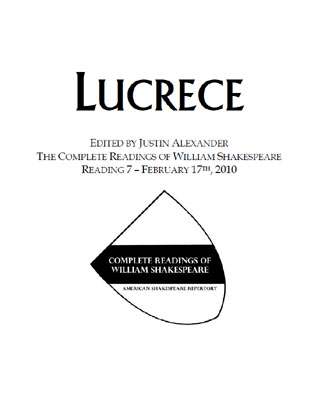 For those of you being introduced to the American Shakespeare Repertory for the first time with our production of William Shakespeare’s Rape of Lucrece in the 2011 Minnesota Fringe Festival, one of the distinguishing traits of the company is our “foundational” approach to Shakespeare.
For those of you being introduced to the American Shakespeare Repertory for the first time with our production of William Shakespeare’s Rape of Lucrece in the 2011 Minnesota Fringe Festival, one of the distinguishing traits of the company is our “foundational” approach to Shakespeare.
